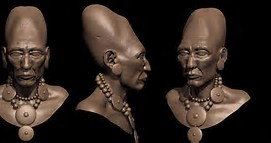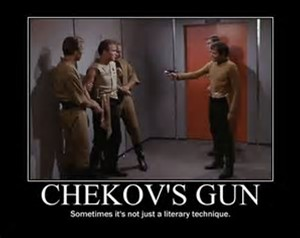
I just got back from Mexico and had the opportunity to visit some Mayan ruins. Seeing various ancient sites (Coba, Tulum, Chitzen Itza) is great creative inspiration for roleplaying! It’s also a reminder of an unusual and curious phenomena found not only in Central and South America, but all across the world: Elongated Skulls.
Accepted thinking is that skull elongation was the result of various types of head-binding practices adopted by primitive cultures. The application of clothes, boards and ropes on an infant’s skull to deform and stretch the soft craniums in children. Unfortunately, attributing ALL elongated skulls to this theory is challenged by 3 basic issues:
- Pre-natal skull elongation. There are documented cases of in-utero and very young infants with skull elongation.
- Cranial Volume. While purposeful elongation can change the shape of a skull, it does not alter the volume of the skull. There are many examples of elongated skulls with 20-25% higher cranial volume. (see Paracas skulls).
- Differences in skull suturing. Certain elongated skulls have only one parietal plate rather than two as in normal skulls.
Skull deformation, aberrations in volume and suturing are often ascribed to dolichocephaly, hydrocephaly, craniosynostosis or Antley-Bixler syndrome, but there is not enough evidence to support these medical theories. Elongated skulls have been found in Egypt, Malta, Russia, Peru, Bolivia and Mexico and head-binding was performed in the Congo, Vanuata and Malasia. Notable rulers in both America and Egypt are known to have elongated skulls: Tutankhaten (King Tut), his father Akhenaten, Nefertiti, and the Mayan Lord Pakal.
I’m not suggesting “Ancient Aliens”, but there is an argument to made for elongation via genetics verus elongation via binding. A distinct race of people, with elongated skulls, that also held positions of power is depicted in history and through the archeological record. Is it possible that the wide-spread practice of head-binding by many cultures around the world was “emulative”?
So what does this have to do with Shadow World? Terry has sprinkled bit and pieces of information throughout his books including this one:
“The tall, slender Lydians are most populous in Mythenis and some regions of Gaalt, thought they are found on other cool climes—especially in the southern hemisphere. This race has a somewhat elongated skull and large, bright, amber-colored eyes. They have fair skin, pale blond hair and are more slender than the Laan or Talath and tend to be hirsute……Some Loremasters believe that the, or perhaps the Talath, are descendants of the Worim.
And this:
“Some Loremasters hold that the Trogli are a race descended from the Worim: those who chose to hide underground at the end of the Interregnum.
So what do we know about the Worim? Only what we can piece together from various obscure mentions: they are non-native to Kulthea, had a high level of technology and built machines (tunnelers and war-machines). They may be precursors to the Laan (or Talath, or Lydians) or Trogli.
Until Terry expands upon the Worim, we’ve had to come up with some of our own material. First and foremost, the Worim had elongated skulls. This genetic trait was passed down to a lesser degree to both the Lydians and the Trogli. We’ve also generated some additional summary info in our SW Civilization Summary here (btw you need a Forum membership to see and download files).
This helps differentiate the Worim from some of the other Interregnum civilizations, Taranian & Jinteni, and adds a unique physical marker to the race. For some great ideas and SW campaign flavor, google elongated skulls, Paracas and especially Lord Pakal’s tomb.



